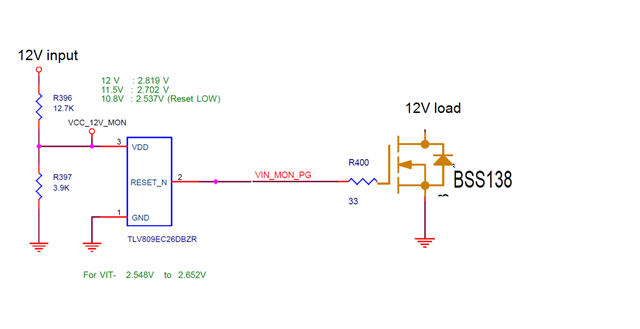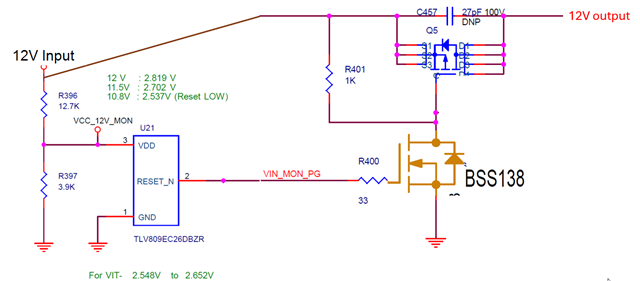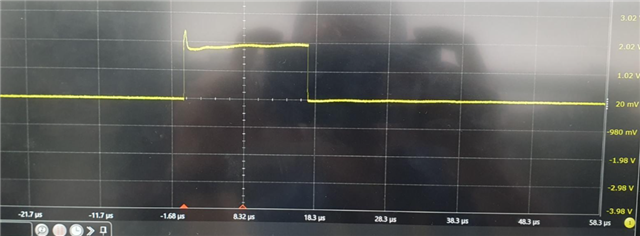Tool/software:

HI All, I have simple circuit, with (High & low) issue.
I am using TLV809E (2.6V) to monitor the voltage
If Voltage at 12V, i should get high to trigger the N-Mosfet
If voltage below 10V, then i should get low.
But in my case, i am always getting low from TLV809E.
If device isolated from MOSFET, it works fine. When i connect to FET, its always driven low.
What's really goes wrong on this?




